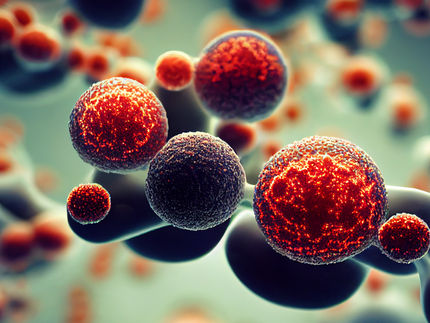Fixed muscle tissue culture develops blood vessels and aligned structure
Research at Eindhoven University of Technology opens the way to engineering of thicker muscle tissue
Researchers at Eindhoven University of Technology (TU/e) have found a simple way to grow muscle tissue with a real muscle structure in the laboratory. They found that the muscle cells automatically align themselves if they are subjected to tension in one direction – this is essential for the ability of the muscle cells to exert a force. The endothelial (blood vessel) cells in the culture also automatically grouped themselves to form new blood vessels. This finding is a step forward towards the engineering of thicker muscle tissue that can for example be implanted in restoration operations. The results were published in the scientific journal tissue engineering Part A.
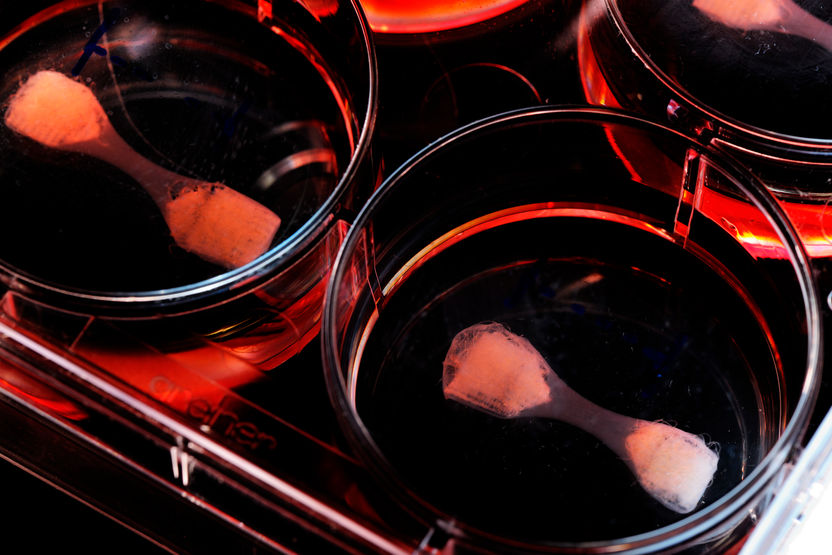
Culture dishes with muscle tissue fastened with Velcro tape.
Eindhoven University of Technology/Bart van Overbeeke
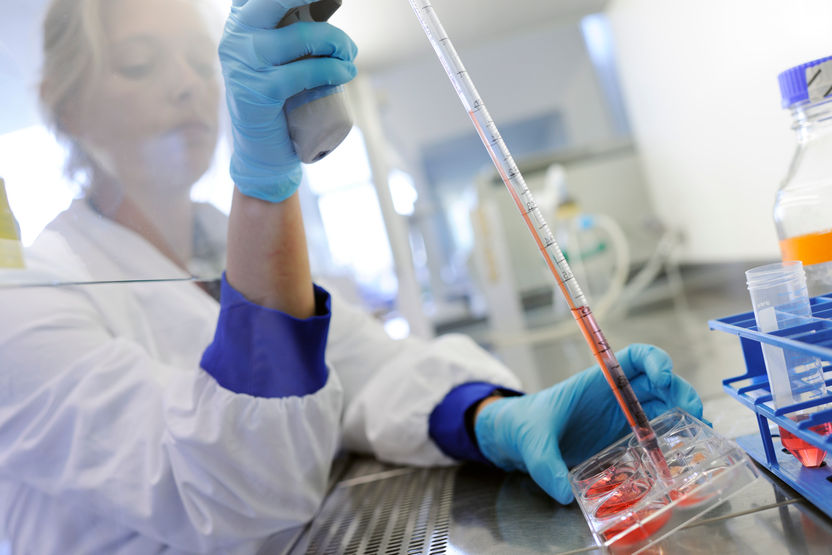
Researcher dr. Daisy van der Schaft of Eindhoven University of Technology working on the preparation of muscle tissue cultures.
Eindhoven University of Technology/Bart van Overbeeke
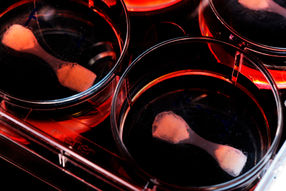
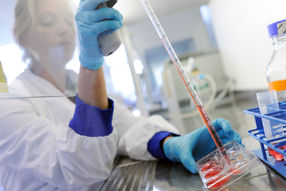
Another important aspect of the finding is that it was not necessary to add any biochemical growth factors to initiate the process. These substances are normally required for processes of this kind, but their action is difficult to control, according to TU/e researcher dr. Daisy van der Schaft.
Disorganized
Other researchers have also succeeded in engineering muscle tissue containing blood vessels, but in these cases the muscle cells and blood vessels were disorganized. To give the muscles their strength, all the muscle cells need to be aligned in the same direction. Additionally, the muscles need blood vessels to supply them with oxygen and nutrients.
Tension
The TU/e research team produced engineered muscle tissue from a mixture of precultured stem cells and blood vessel cells (both from mice) in a gel. They then fastened the pieces of cultured tissue, measuring 2 x 8 mm, in one direction using pieces of Velcro. The stem cells then changed into muscle cells. This process normally involves shrinkage of the tissue. However, because the tissue was fastened this shrinkage was prevented, and the resulting tension caused the muscle cells to become aligned during the culturing process. This alignment is essential for the muscles to be able to exert a force.
Growth factors produced
In addition, the blood vessel cells organized themselves to form blood vessels, without the researchers needing to add any growth factors – these were created automatically. Measurements by the researchers showed that the muscle cells produced the required growth factor themselves, as a result of the tension to which they were subjected.
Thicker tissue
The formation of blood vessels is an important step to allow the engineering of thicker muscle tissue. Up to now the maximum thickness that could be achieved was 0.4 mm, because the cells must be located no further than 0.2 mm from a blood vessel or other source of nutrients to ensure that they receive sufficient oxygen. The blood supply through the blood vessels means that in the near future it will be possible to feed the engineered muscle tissue from within, making it possible to culture thicker tissue.
Not just cosmetic
The aim of the research is ultimately to allow the treatment of people who have lost muscle tissue, for example through accidents or surgery to remove tumors. “Just one example is the restoration of facial tissue”, explains Van der Schaft. Using these engineered muscle tissues would not just be cosmetic, but would give function back to the tissue.” She expects that this should be possible within the next ten years.
One of the following steps to achieve this is the engineering of thicker muscle tissue, which the TU/e researchers will start working on in the near future. The same techniques will also have to be applied on human cells. “Researchers at the University Medical Center Groningen have already started, in partnership with us, to engineer human muscle tissue”, Van der Schaft concludes.
Original publication
van der Schaft DW, van Spreeuwel AC, van Assen HC, Baaijens FP; Mechanoregulation of vascularization in aligned tissue engineered muscle; a role for VEGF; Tissue Eng Part A. 2011 Aug 11.

